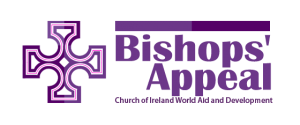Bishops’ Appeal contributed €2000 towards the funding of What in the World?, a television series that highlights global inequality and human rights abuses.

What in the World? is a documentary, shot in Afghanistan, Sierra Leone, Ghana and Greenland, featuring compelling and moving stories of people whose lives have been framed by poverty and injustice. It aims to challenge the sense that nothing can be done to alleviate the suffering.
The documentary is being screened on Tuesdays at 11:15 pm on RTÉ ONE Television.
Tuesday 29 November
Afghanistan: Malalai Joya – Enduring Freedom
The recent history of Afghanistan has been tumultuous. An estimated 92,000 people have been killed in the war and for those who survive, life is far from easy. Malalai Joya – Enduring Freedom tells the story of a woman who has lived through it. Her early life involved moving from Afghanistan to Iran to Pakistan and back to an Afghanistan where women were not allowed to work or be educated after the age of 8.
After the American invasion, a parliament of sorts emerged and Joya was elected to it at the age of 25. Four years later, she was expelled for her outspoken comments, including accusing her fellow parliamentarians of misogyny, criminality and of being drug lords and war lords. She has survived seven assassination attempts and moves around safe houses, continuing to advocate for women’s rights, secularism and nonviolence.
Tuesday 6 December
Sierra Leone: After Ebola
The last case of Ebola in Sierra Leone was recorded on 19th January 2016, following the outbreak that began in West Africa in December 2013. Relative to other treatable diseases, such as malaria and diarrhoeal diseases, the death toll from Ebola was relatively low, so why did it catch the world’s attention in a way that malaria and diarrhoea did not? Part of the answer lies in the fear that captured the western world, but while there was little ground for this fear in the western world, the fear of spread in West Africa was real. The death rate for those who contracted the disease was 70-80%. Physical contact with those who had the disease was not possible. The social and economic costs were and still are enormous.
This film examines the fear and how the global media reported on it, as well as how Ebola dwarfed other diseases whose death toll continues to blight the lives of the people of once war-torn Sierra Leone.
Tuesday 13 December
Ghana: Digital Death
Agbogbloshie is a vast, scorched field, right in the middle of Accra, Ghana, dotted with rusting hulks and heaps of scrap. Hundreds of people work here in the place where thousands of tons of the world’s electronics go to die. The scrap yards are populated by cautionary tales, dropouts trying to make enough to go back to school before they age out, arguing about improper fractions with the kids in crisp, pressed uniforms who walk through on their way home. High school isn’t free in Ghana. It’s supposed to be: It’s in the constitution, and the last three presidents promised to improve access to education, but not one got around to it. People get hurt here all the time. The older boys’ hands are scarred from cuts and burns.
Up to 80 percent of all the electronic devices and appliances thrown away around the world may end up in dumps like Agbogbloshie. Some research suggests that the average American, for example, produces about 66 pounds of electronic junk every year. This is hazardous waste—the cathode ray tube in just one old style computer monitor can contain almost seven pounds of lead—which makes it expensive to recycle. So hundreds of tons of this waste quietly disappears into a world of legitimate recycling companies, shady middlemen, and black market trash traders. Interpol says one of every three shipping containers inspected leaving Europe for the developing world is packed with illegal electronic waste.
This film tells the stories of the places where this waste ends up and the people that work there.
Tuesday 20 December
Greenland: A Requiem for Snow
According to Ole Henrik Magga, a Norwegian linguist, the Sami people of Scandinavia and Russia use at least 180 words related to snow and ice. Irrespective of the number of words for snow, it is obvious that there is less of it. Glaciers are getting smaller, snow is retreating earlier in the spring, sea ice in the Arctic is shrinking and sea level is rising.
Greenland is the largest island in the world and 85% of its surface is covered in ice. This documentary will be a lyrical celebration of the stunning landscape of Greenland, with the thinly veiled threats of the snow’s disappearance providing a backdrop. It will leave the viewer with an aching sense of Greenland’s beauty as will as an aching sense of loss at its looming diappearance

